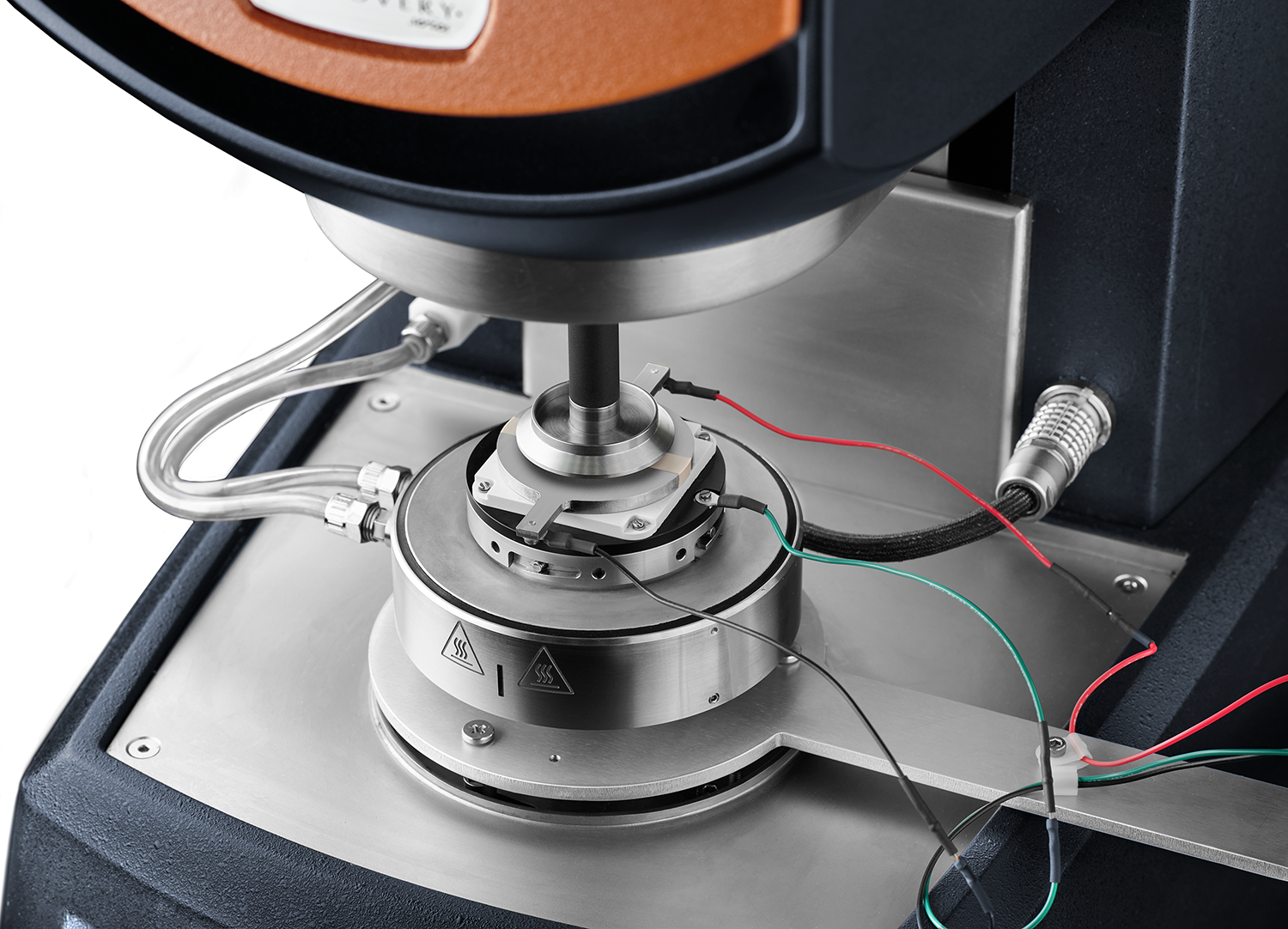レオロジーとインピーダンスの同時測定によるバッテリースラリー評価
Morgan Ulrich | Hang Lau | Sarah Cotts
2024年3月18日
リチウムイオン電池(LIB)は、さまざまな活物質と不活性物質から構成された、多段階の工程を経て製造されています。材料の選択と処理条件は、最終的なバッテリー性能に大きく影響する場合があります。特に電極は、電池の性能を左右する最も重要な構成要素のひとつです。電極品質は、バッテリーの全体的なエネルギー密度や電気化学的性能に直接影響します。
電極の製造工程は非常に複雑で、活性物質、バインダー、導電性添加剤を混合してスラリーを配合し、金属集電体上にコーティングします。続いて、電極を乾燥させ、カレンダー処理(圧縮)を行います。電極の製造工程において、スラリー製剤は保存中に安定性を保ち、容易に分散し、均一にコーティングできるよう流動性を備えている必要があります。最適な配合と処理のためにスラリーの特性評価を行うことは、バッテリー全体の性能を向上させるための重要なステップです。
レオロジーとは、応力下での物質の流動と変形の研究であり、電極スラリーの開発と最適化に重要な役割を果たしています。前回のブログでご紹介したように、バッテリー電極スラリーのレオロジーには、適切なコーティングと安定性を確保するために極めて重要な3つの特性である、粘度、チキソトロピー(揺変性)、降伏応力の測定が含まれます。

Another important element of electrode performance is electrical conductivity. Lithium-ion battery cathodes typically include conductive additives such as carbon black particles to compensate for the poor conductivity of the active materials. The carbon black particles agglomerate around the active particles to form a percolation network to conduct electrons to the current collector. The conductive network structure is highly important to the final electrode performance, but shear-induced changes during coating can disrupt the electrically conductive network.
Impedance spectroscopy provides insight on the conductive material dispersion in the slurry but does not account for shear-induced changes from the coating process. Simultaneous rheology and electrochemical impedance spectroscopy directly measure shear-induced changes in the microstructure, replicating slurry coating conditions and enabling measurements of time-dependent recovery after shear. This measurement confirms that the electrically conductive network is maintained in the finished electrode, predicting successful electrode performance prior to full battery assembly.
The new Discovery Hybrid Rheometer Rheo-Impedance Spectroscopy accessory achieves unmatched data quality in both dielectric impedance and rheology measurements. The novel design eliminates the need for electrical contact with the upper tool, which limits the measurement range, and instead positions both electrodes on a lower plate with the insulated upper parallel plate geometry as a conductor. The Rheo-Impedance accessory enables testing across the full range of the DHR’s torque sensitivity, enabling precise characterization of viscosity, yield stress, viscoelasticity, and structure recovery.
Learn more about unlocking complete rheological and impedance measurements of your slurry with the new DHR Rheo-Impedance accessory. For personalized solutions and battery testing guidance, contact TA Instruments experts.
その他のリソース
- Application Note – Characterization of LIB Cathode Slurries Using Simultaneous Measurements of Rheology and Impedance Spectroscopy
- Application Note – Rheological Evaluation of Battery Slurries with Different Graphite Particle Size and Shape
- Application Note – Time Dependent Stability of Aqueous Based Anode Slurries with Bio-Derived Binder by Rheological Methods
- Application Note – Rheological and Thermogravimetric Characterization on Battery Electrode Slurry to Optimize Manufacturing Process
- eBook – https://www.tainstruments.com/essential-battery-slurry-characterization-techniques/







